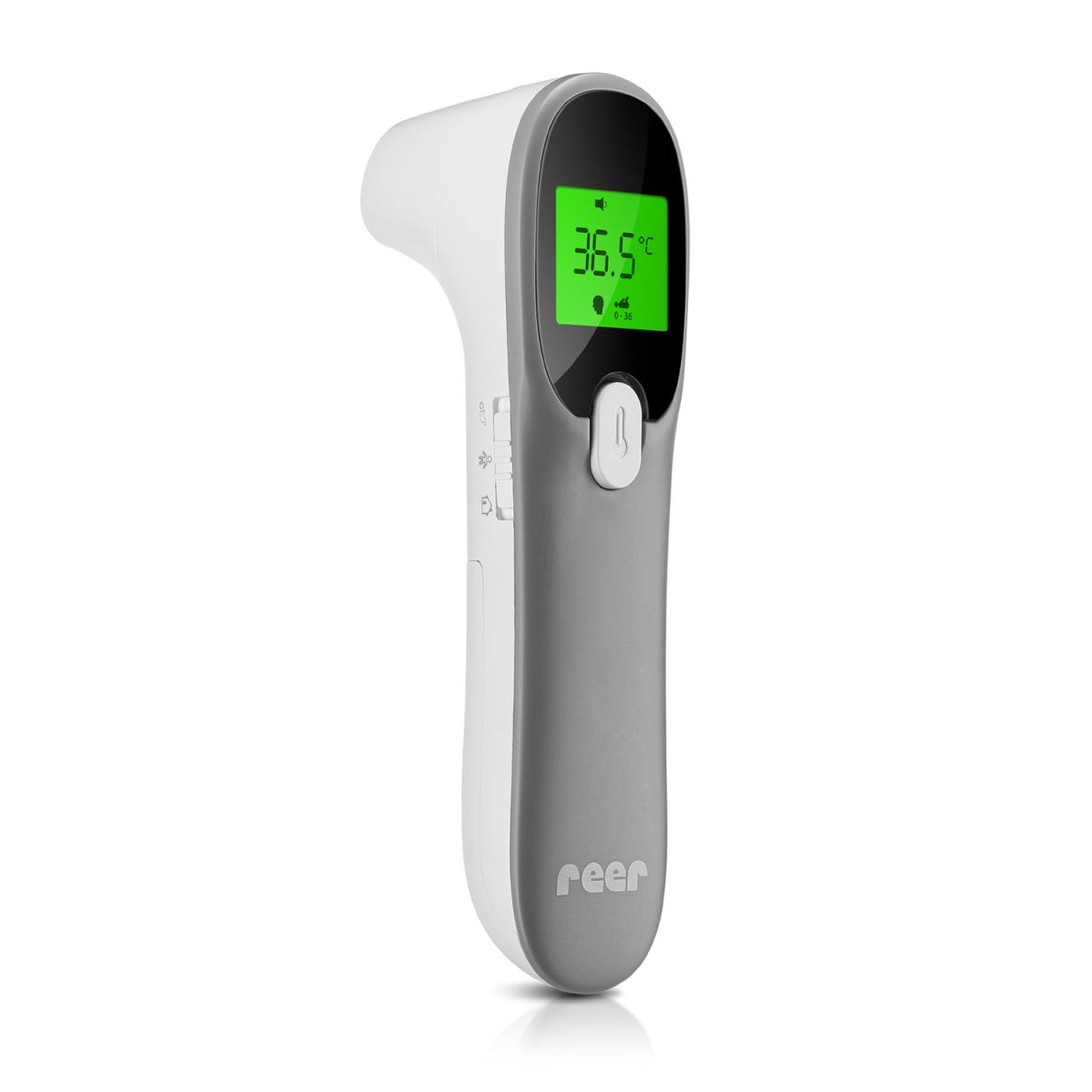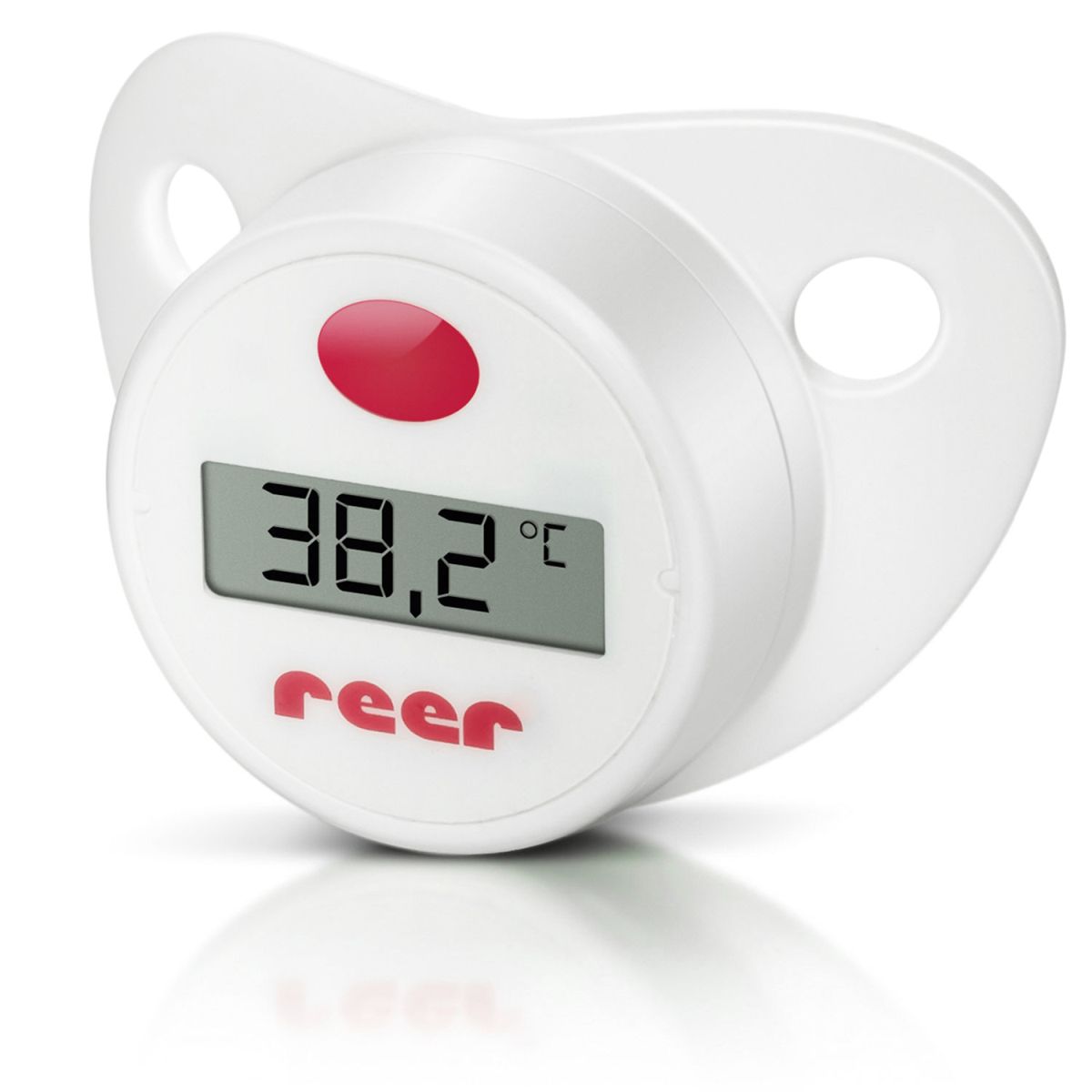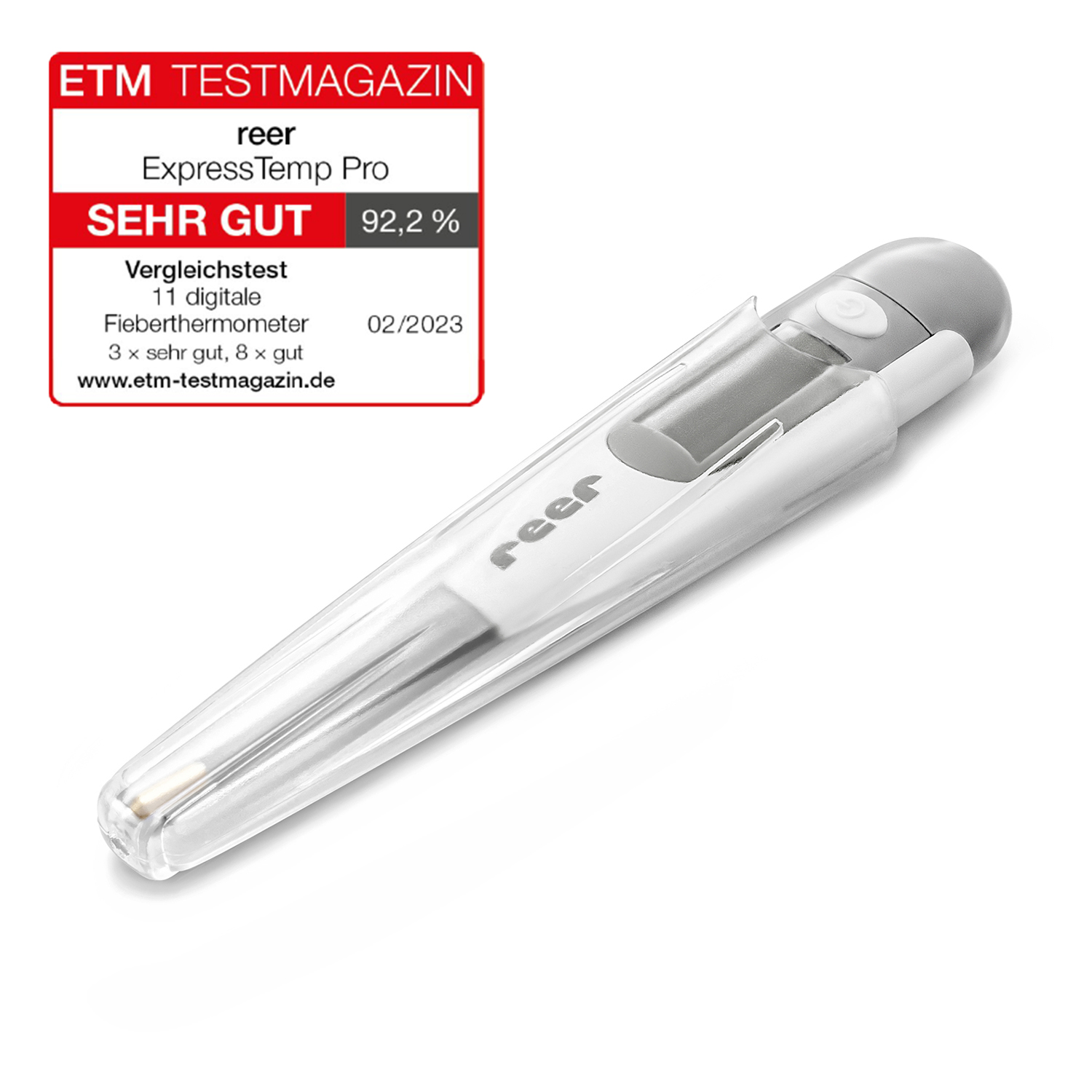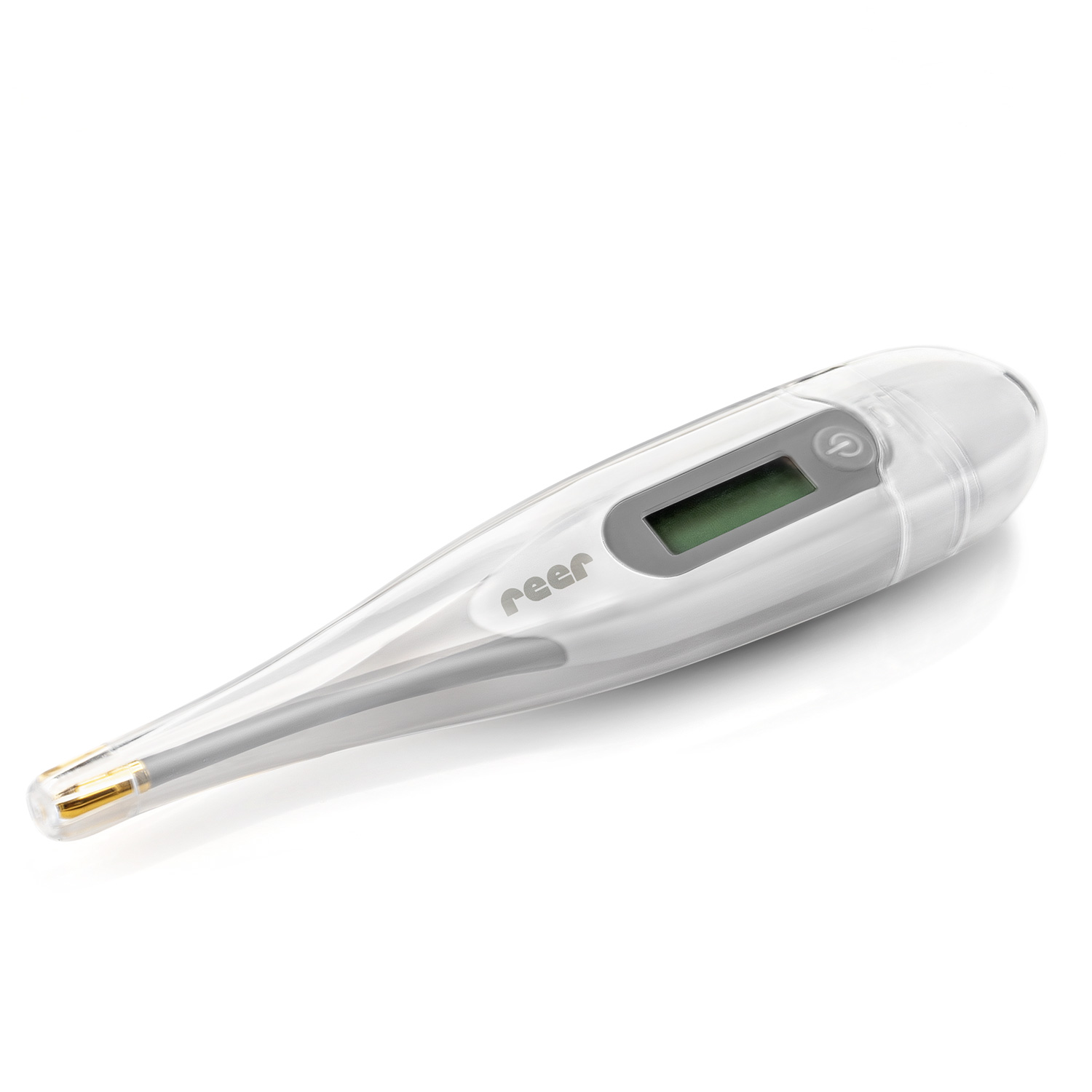Fever Thermometers
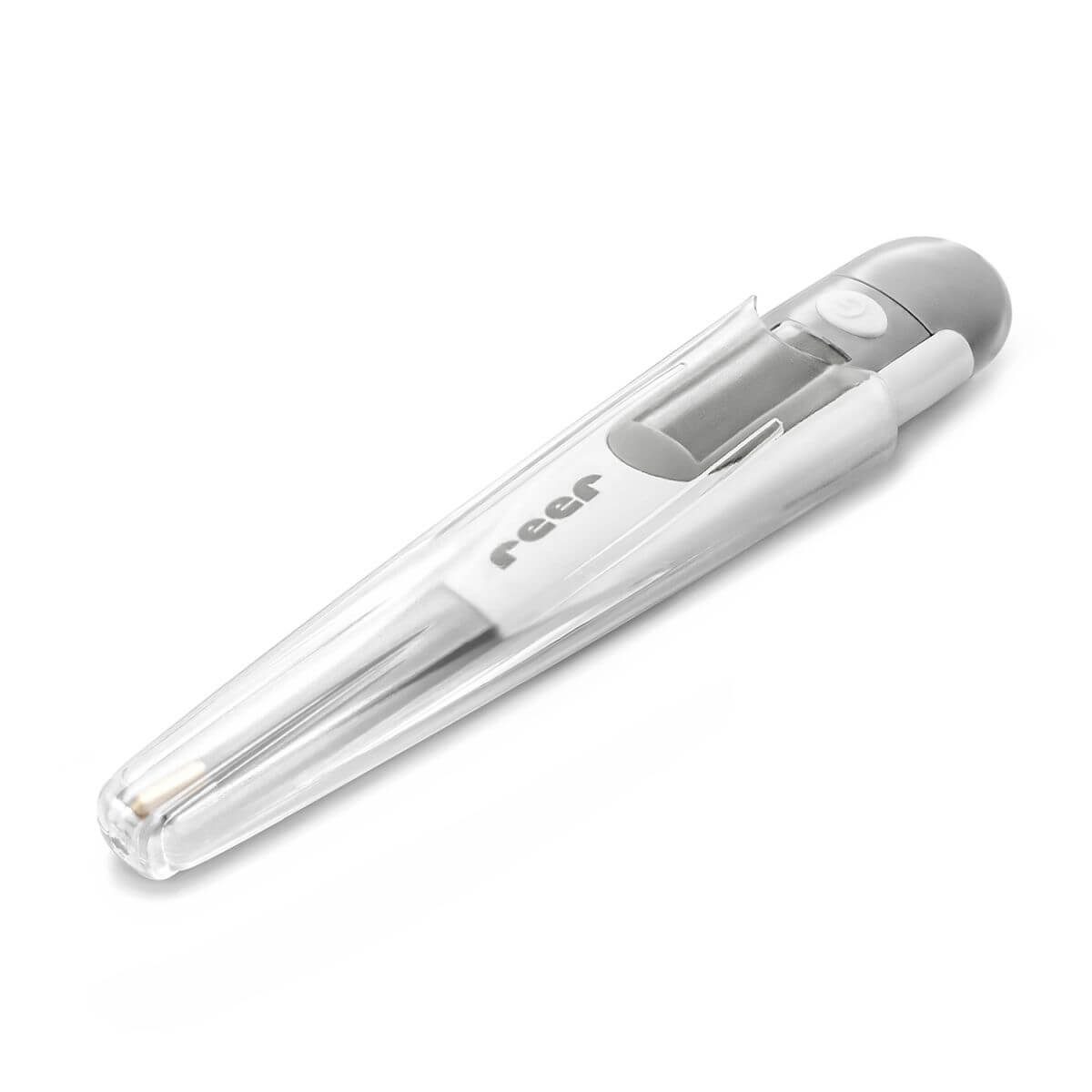
Find the right clinical thermometer for your baby
Babies and toddlers react particularly quickly when afflicted with a fever, major or minor. Thus, parents would naturally like to know how high the fever of their little darling is to assess the situation properly. Each of the many different thermometers on the market promises practical help, but which one is right for you and your baby? Our buying guide for clinical thermometers offers advice for just this question!
Where does the clinical thermometer measure most accurately?
The following problem is well known: Your baby or toddler does not like it very much when a thermometer is held in or against his body for a long time. They do not yet understand why this is happening and in their weakened state may feel an aversion to any sort of examination. For the first measurement a digital, non-contact clinical thermometer for the forehead, such as the SoftTemp from reer, is a good choice. It measures the temperature of the skin and does so very quickly (less than one second). It is therefore ideal for that initial test as to whether or not your baby has a fever.
Similarly fast is a clinical thermometer for the ear, if your baby holds still. A good example is the inexpensive and reliable SkinTemp thermometer from reer. Your child will certainly be confused at first, but with each use, their comfort with the strange device will slowly increase. If you proceed carefully, your baby will quickly realize that taking a temperature is short and painless. The SkinTemp also measures quickly in only a second, and here, too, the measurement serves as a first rough test.
In the ear, the measurement is done quickly but not exactly uncomplicated. You have to aim the sensor exactly at the eardrum of your baby or toddler if you want to have a correct measurement. Therefore, always approach the procedure calmly and sensibly to get a proper result from the measurement.
The measurement of the skin is always subject to fluctuations from variables such as the room's temperature or an uneven distribution of body temperature.
You can ensure greater accuracy with these methods:
Measuring under the armpit and in the mouth is a method that you and your partner surely know quite well from yourselves. Clinical thermometers measure the actual temperature in these places quite accurately. The only disadvantage is that they usually take much longer than the aforementioned methods. This can be complicated in situations with a jumpy toddler. A pacifier-shaped thermometer from reer is particularly clever, as your baby won't even notice their temperature being taken.
Clinical Thermometers that measure the rectal area aren't only the best when measuring babies but also everyone else. For some time clinical thermometers with a rubber exterior have made this kind of temperature measurement safer and more comfortable. A great example is reer's Colourtemp Clinical Thermometer. Always remember to proceed with this procedure with caution. When your baby or child is relaxed, this procedure is far easier. If you can get past the difficulty of the procedure, then this will give you the best and most accurate results. However, if your toddler is not willing, do not despair. The forehead and ear measurements can be made multiple times over a few hours to ensure an accurate measurement.
Which clinical thermometers measure accurately?
As already mentioned, there are different clinical thermometers. External measurements are more prone to errors, especially if performed incorrectly. Generally, however, the deviations are not greater than 0.2 degrees Celsius with a functioning clinical thermometer and correct use. In a situation where your baby or toddler has a normal fever; this difference is irrelevant. It only gets tricky in the range between 37 and 38 degrees, when you have to decide: Will my baby or toddler go to daycare today, or not? Nobody wants to have to go there again after an hour to pick them up. Also in the upper fever range, the aforementioned deviation can sometimes be critical in deciding when and how to proceed.
Correct measurement with the clinical thermometer
Under the armpits, the accuracy of the measurement seems to be the least accurate. Is the sensor of the thermometer really placed so that there is no heat loss? Children's arms are small. Again, take the time to check the correct position and maintain it long enough until the reading is complete.
In the mouth of the baby and toddler, the measurement is very accurate, second only to the rectal method. However, the mouth must remain closed for this and the tip of the thermometer should not be played with, two factors which can be hard for a baby or toddler to maintain.
The rectal method is by far the most accurate way to take your baby's temperature. The only important thing here is that they relax. Push the clean tip into the anus for about 2 to 3 centimetres. This way you don't go too deep and at the same time you get a reliable reading of your child's actual body temperature.
In the mouth of the baby and toddler, the measurement is very accurate, second only to the rectal method. However, the mouth must remain closed for this and the tip of the thermometer should not be played with, two factors which can be hard for a baby or toddler to maintain.
The rectal method is by far the most accurate way to take your baby's temperature. The only important thing here is that they relax. Push the clean tip into the anus for about 2 to 3 centimetres. This way you don't go too deep and at the same time you get a reliable reading of your child's actual body temperature.
Which clinical thermometer is best for newborn and baby?
So if you are wondering which clinical thermometer is right for your baby or toddler, there are a few points you should take into account when making your decision. The best clinical thermometers, no matter what part of the body they are used on, are digital and measure extremely quickly. This means the baby does not have to stay still for too long. A flexible measuring tip prevents injuries. For those with allergies, there are also thermometers with a gold-plated measuring tip, such as the ExpressTemp digital express thermometer from reer with a flexible measuring tip and a measuring time of only 10 seconds. Equally fast and also with a flexible measuring tip is the ColourTemp clinical thermometer from reer, which shows the body temperature within 10 seconds. The last measured temperature is automatically shown on the extra large, illuminated display for 2 seconds after switching on. So you can easily follow your child's temperature.
However, the optimal solution for rectal measurement of fever on the market is the ExpressTemp Pro from reer. With a measuring time of 10 seconds, it is very fast, and the flexible measuring tip makes measuring gentle and comfortable for your baby. In addition, it has a particularly large, illuminated display and is therefore perfect for use at night. Thanks to the gold-plated tip, the ExpressTemp Pro is also suitable for those with allergies and is particularly gentle on sensitive baby skin. This was recently confirmed by ETM magazine, which awarded the device the test mark "VERY GOOD".
However, the optimal solution for rectal measurement of fever on the market is the ExpressTemp Pro from reer. With a measuring time of 10 seconds, it is very fast, and the flexible measuring tip makes measuring gentle and comfortable for your baby. In addition, it has a particularly large, illuminated display and is therefore perfect for use at night. Thanks to the gold-plated tip, the ExpressTemp Pro is also suitable for those with allergies and is particularly gentle on sensitive baby skin. This was recently confirmed by ETM magazine, which awarded the device the test mark "VERY GOOD".
How to clean the clinical thermometer?
A fever always means that the immune system is busy. Accordingly, sufficient hygiene is important when taking a temperature. We therefore recommend the use of alcohol (75% isopropyl alcohol) to disinfect the clinical thermometer after taking the temperature. You can get the alcohol in the pharmacy, almost every pharmacy offers it in the form of swabs, especially for disinfection. For hygienic reasons, we also recommend using a separate clinical thermometer for each family member.



